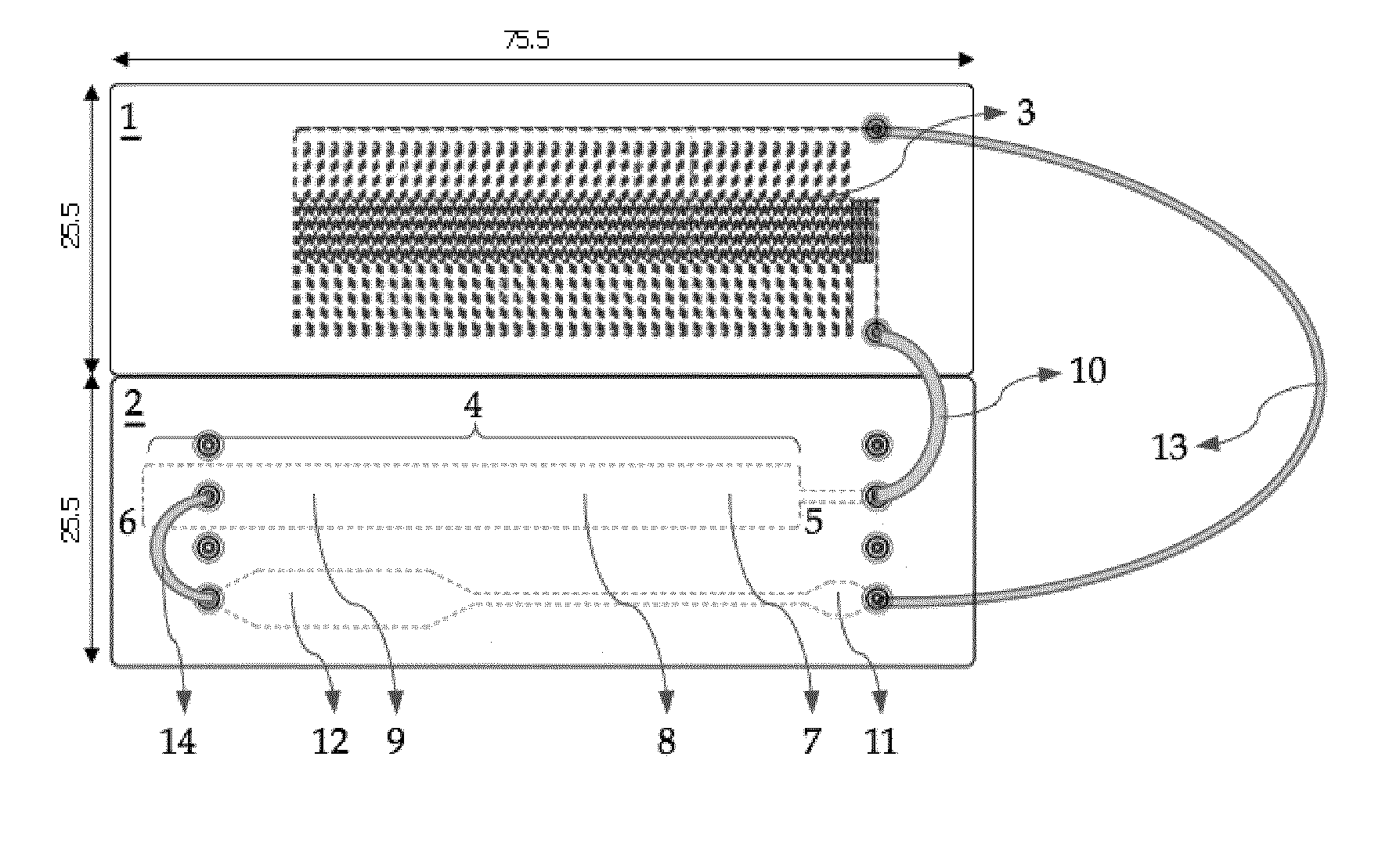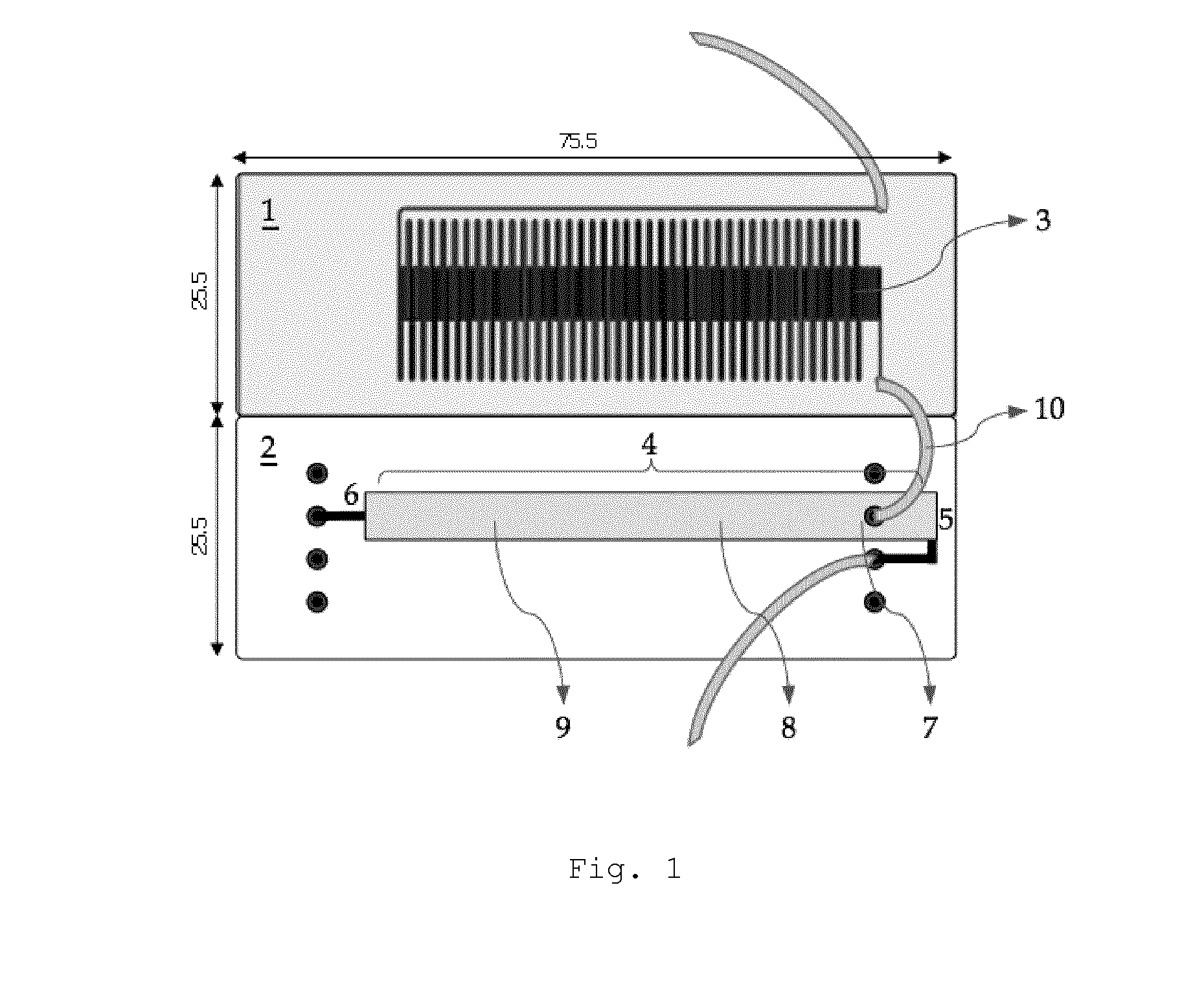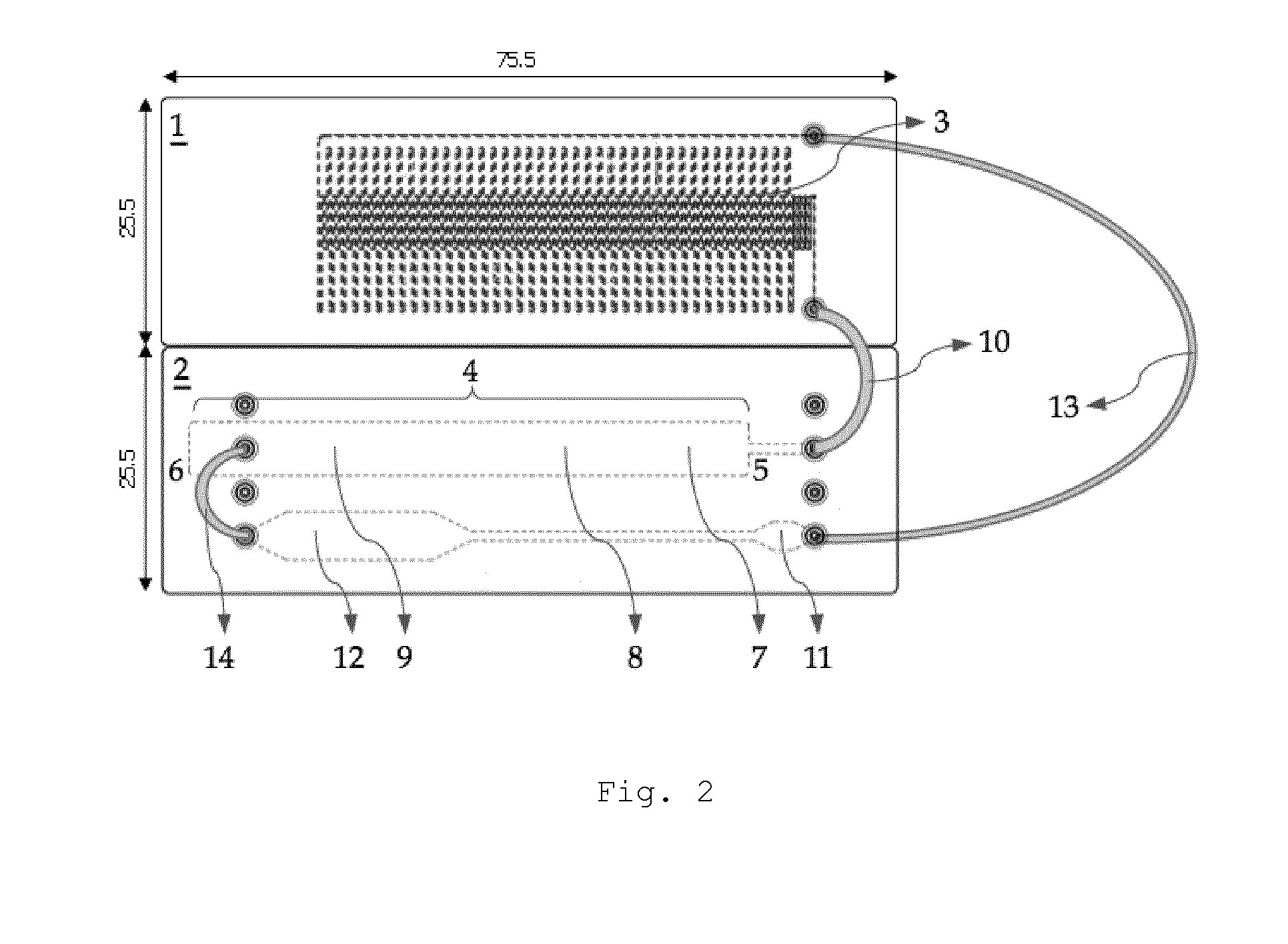Method and device for rapid detection of amplified nucleotide sequences
a nucleotide sequence and amplified technology, applied in the field of amplified nucleotide sequence rapid detection, can solve the problems of limited amplification rate, false positive, complex methods and devices for measurement and analysis, etc., and achieve the effects of reducing the cost, improving the rapidity of use, and simplifying the use and efficiency of the method
- Summary
- Abstract
- Description
- Claims
- Application Information
AI Technical Summary
Benefits of technology
Problems solved by technology
Method used
Image
Examples
first embodiment
[0068]In a first embodiment, the detection will be accomplished in two steps: an amplified target (specific) nucleotide sequence will be hybridized with a complementary and labeled specific probe, present in the area 7 for applying the test strip 4, in order to form a complex between the target sequence and its labeled specific probe, a complex which will migrate on the membrane towards the detection area 8 where it will react with the first capture probe bound in the detection area, thereby forming a complex of the sandwich type. In this complex, a first portion of the amplified target nucleotide sequence is hybridized to a first capture probe allowing immobilization of the target sequence at a specific location of the test strip 4 and a second portion of the amplified target nucleotide sequence is hybridized to a second labeled probe allowing detection of the complex formed and immobilized on the test strip 4 (FIG. 4A). At this instant, the complex will be made visible and detecta...
second embodiment
[0069]In a second embodiment, the detection will be accomplished in one step: an amplified and labeled target nucleotide sequence (for example by means of a labeled primer which is incorporated into the amplicon during the amplification, preferably PCR) will migrate on the membrane of the test strip 4 towards the detection area 8, where the labeled target sequence will react with the first bound capture probe in the detection area, thereby forming a complex. In this complex, a first portion of the amplified target nucleotide sequence is hybridized to a first capture probe allowing immobilization of the amplified target nucleotide sequence at a specific location of the test strip 4 (FIG. 4B). The presence of a label on the amplified target sequence allows detection of the complex formed and immobilized on the test strip 4.
[0070]After having the amplified and labeled target nucleotide sequence migrate towards the detection area 8, it is optionally possible to have a buffered solution ...
PUM
| Property | Measurement | Unit |
|---|---|---|
| Length | aaaaa | aaaaa |
| Length | aaaaa | aaaaa |
| Temperature | aaaaa | aaaaa |
Abstract
Description
Claims
Application Information
 Login to View More
Login to View More - R&D
- Intellectual Property
- Life Sciences
- Materials
- Tech Scout
- Unparalleled Data Quality
- Higher Quality Content
- 60% Fewer Hallucinations
Browse by: Latest US Patents, China's latest patents, Technical Efficacy Thesaurus, Application Domain, Technology Topic, Popular Technical Reports.
© 2025 PatSnap. All rights reserved.Legal|Privacy policy|Modern Slavery Act Transparency Statement|Sitemap|About US| Contact US: help@patsnap.com



